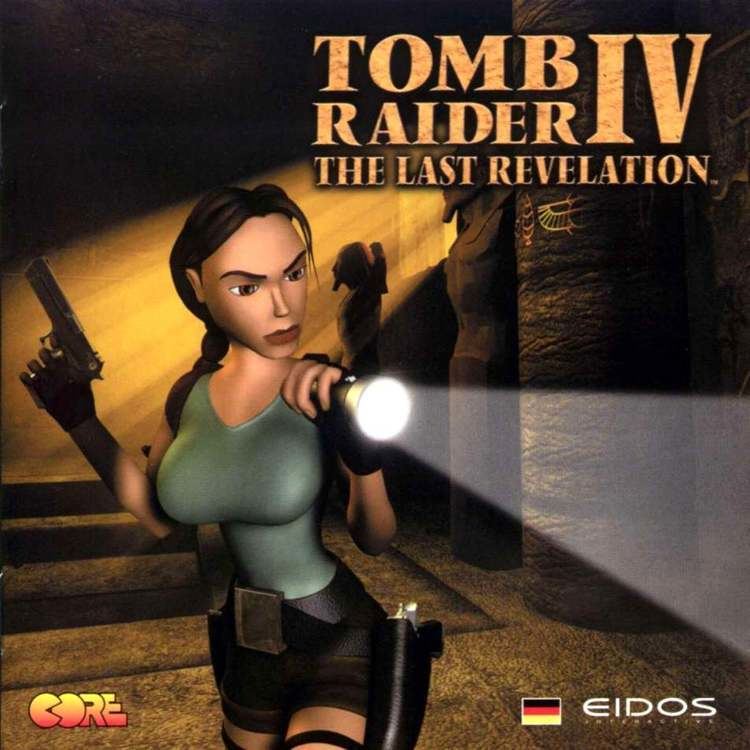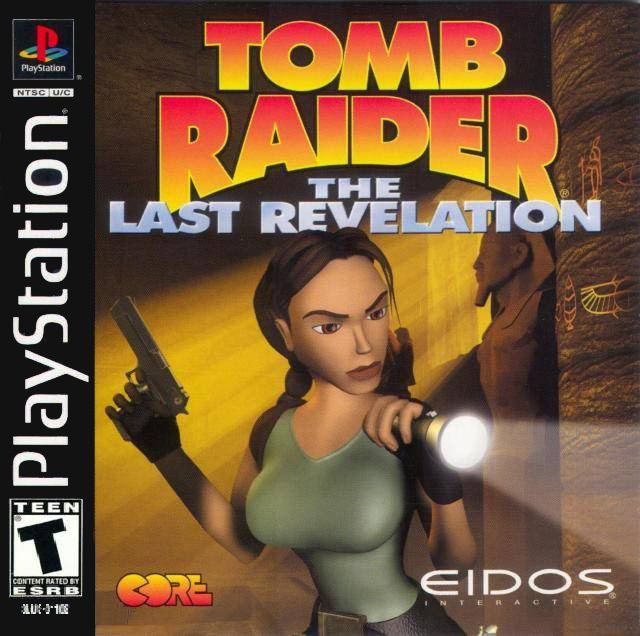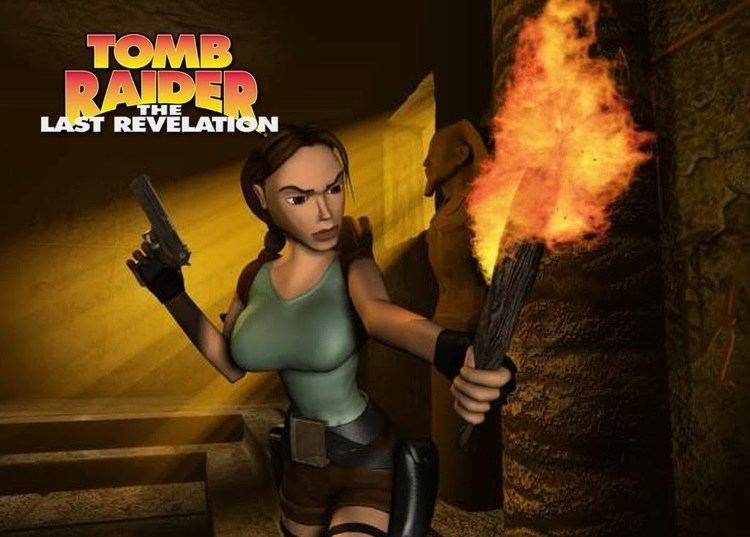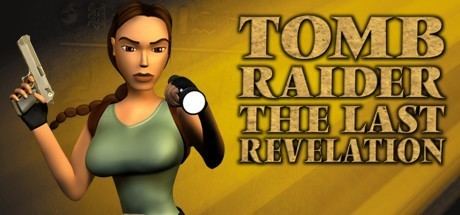8.6 /10 1 Votes8.6
Producer(s) Troy Horton Genre Action-adventure game | 8.5/10 IGN Initial release date 1999 | |||||||||||||||||||||||||||||||||
 | ||||||||||||||||||||||||||||||||||
Programmer(s) Chris CoupeMartin GibbinsDerek Leigh-Gilchrist Publishers Eidos Interactive, Capcom, Square Enix Holdings, Aspyr Media, Noviy Disk, Sold Out Sales & Marketing Ltd. Similar Tomb Raider games, Eidos Interactive games, Platform games | ||||||||||||||||||||||||||||||||||
Cgrundertow tomb raider the last revelation for playstation video game review
Tomb Raider: The Last Revelation is the fourth instalment in the Tomb Raider video game series. It was developed by Core Design and published by Eidos Interactive. It was released on PlayStation, Microsoft Windows and on the Dreamcast with exclusive graphical and sound enhancements. The game was a commercial success, selling 5 million copies worldwide, and was the last Tomb Raider game released on "Greatest Hits".
Contents
- Cgrundertow tomb raider the last revelation for playstation video game review
- Tomb raider 4 the last revelation part 1 angkor wat
- Gameplay
- Plot
- Development
- Reception
- References

Tomb raider 4 the last revelation part 1 angkor wat
Gameplay
The game features many new moves. Lara can now grab hold of ropes dangling from the ceiling and swing from them. These can be used to cross large gaps. She can climb up and down ropes and poles also. She can now shimmy around corners unlike in previous titles. Lara herself in this instalment has a smoother, more refined appearance. This is due to moving and flexible joints between meshes, creating a more realistic approach to the heroine. In this game, Lara has the ability to return to previous levels, with some levels taking place in a non-linear order. She also has the option of taking different routes through some of the levels, each with their own set of challenges. Instead of the previously used "item ring", the inventory screen places the items into a line. There is also a compass in the lower left hand corner of the inventory screen, but it is only important to activate cheats or to help solve a puzzle in the Citadel level. Also, when in the inventory, some items will have the word "combine" in its menu. Selecting it will cause a second item line to appear. The player can then select an item to combine with it to form a new item. A new weapon, a large revolver, appears late in the game and is very powerful and effective at stopping enemies. When combined with the laser sight, which lights a red dot at the point where the bullet will strike, the player can use it to shoot specific small targets. The player can also attach the laser sight to a crossbow.
Plot

The story opens in Angkor Wat in 1984, when Lara Croft is 16. She and her mentor, Werner Von Croy, are exploring ancient ruins, searching for an ancient artefact called the Iris. They find it, but Lara finds inscriptions that warn of terrible retribution for any who disturb the artefact. Von Croy ignores the warnings and the temple begins to close. Lara is forced to run, leaving him trapped inside.

In 1999, Lara and a local guide are searching for the Tomb of Seth, hoping to find the Amulet of Horus, a charm in the shape of an ankh, set with a ruby. Upon removing it from a sarcophagus, she finds that the amulet is the key to sealing the dark god Seth away for eternity. Horus and his ally Semerkhet constructed the sarcophagus to hold Seth and that, by removing the amulet, Seth has been released. Her guide is revealed to be working for Von Croy, who is determined to take the amulet for himself. Lara quickly escapes after being chased by Von Croy's mercenaries.

Lara visits an old friend, Jean-Yves, who reveals to her the full magnitude of her mistake. He also reveals that the one place where she might find a way of reversing the damage is in the Tomb of Semerkhet, hidden in the ruins of Karnak. Lara goes there and, after fighting off Von Croy’s mercenaries, finds the entrance and opens it with the amulet. Von Croy follows her, steals the amulet and seals Lara inside. After negotiating various traps and strange enemies within the tomb itself, she finds inscriptions put there in case Seth was ever released. It tells of the Armour of Horus, used by the god in his battle with Seth. When an ancient astrological conjunction occurs (called the Millennial Constellation), and the armour, together with the amulet, is placed on Horus’s statue within his temple under the Great Pyramid of Giza, the god can be summoned and imprison Seth once again.
After escaping a monster in the Tomb (resulting in her guide being killed) and jumping aboard a train, she makes her way to Alexandria, where she once again meets Jean-Yves. He tells her that his excavations around Cleopatra’s palaces have been interrupted by strange creatures frightening the workers away. Lara goes through the palaces and eventually gains the armour. But, on returning to Jean-Yves, she finds that he has been kidnapped by Von Croy, with the price of his release being the armour.
Lara travels to a rendezvous in Cairo to find the city in chaos and the sky darkened by strange clouds. After battling her way through the streets, she finds a wounded Egyptian sergeant, who tells her of strange and diabolical creatures who have arisen and are now guarding the ancient sites throughout the city. After carrying out several tasks for the sergeant, he drives a truck full of explosives into a massive, dragon-like creature guarding the way to an ancient citadel, giving his life so that Lara can continue. Lara finds Jean-Yves, who reveals that Von Croy has been possessed by Seth and is digging in ancient crusader vaults for the Ceremonial Tablet, which contains Seth’s binding spell. Lara, after traversing the citadel and avoiding resurrected crusader knights, finds Von Croy/Seth in an old tomb opened with the Amulet. Seth offers to ‘grant [her] vigour as those around [her] fall’. Lara refuses and runs out of the tomb, pulling the Amulet away, trapping Von Croy/Seth inside.
Lara finally travels to Giza, where the forces of Seth have gathered to block the way to Horus, since the Millennial Constellation is in position. Lara, after fighting her way through those forces and climbing the Great Pyramid, finds her way down into the Temple of Horus and, fitting the armour and amulet to the statue, summons Horus. Horus partially completes his transfer, but Seth arrives and destroys the armour, though the amulet remains undamaged. Lara makes her way out, avoiding Seth’s attacks until in the safe light of the constellation. Then she locks the doors into the temple with the amulet, trapping Seth inside forever. Making her way out completely exhausted, Lara sees Von Croy at the entrance. Unsure about whether he is free of Seth’s influence, she is unwilling to take his arm as the temple begins to collapse around her. Von Croy tries to save her as she hangs from a ledge, but is forced to rush out, leaving Lara to her presumed death. Von Croy doffs his hat and lowers his head at the collapsed entrance as the game ends.
Development
Development of the game began in 1998. The game uses an engine that was built specifically for this game due to the fact that a greater emphasis was put on the PC version which they did not want to be held back by the PlayStation version.
Working on the fourth Tomb Raider game in as many years, the development team was suffering from creative fatigue, and according to designer Andy Sandham, this was what led to the game ending with Lara Croft's death:
We all wanted to kill Lara. Looking at Lara's avatar all day every day for two years was about as much as some of us could take. Management were pretty hands off, so for two weeks, we hatched a plan to kill Lara, and followed it through to fruition. By 'fruition' I mean [Jeremy Heath-Smith, Core Design CEO] finding out we had killed her and it was too far gone to reverse it, and taking us into his office and shouting at us.
The development team began by reading books on ancient civilizations, then designed levels based on these, which Sandham then shaped into the plotline.
Voice actress Jonell Elliot replaced Judith Gibbins as the voice of Lara Croft.
There are two PlayStation versions of the game, with minor differences. The first version requires going back to the title screen after death and only allows five saves per memory card. The second version allows the player to load a saved game immediately after death, and can save a maximum of seven games per official PlayStation memory card. The first version is the one available for download in the PlayStation Store.
The Times, in association with Core, designed a one-off special level to celebrate the finding of Tutankhamen's Tomb. Sir Peter Stothard, a British newspaper editor, is featured as a character briefly in the first scene of this expansion.
Reception
The Last Revelation was a bestseller for two months in the UK. The game received mostly positive reviews upon release. Game Vortex gave it an extremely positive review, 95/100, saying "As would be expected, the latest instalment in the Tomb Raider series stuns us with richly detailed levels, amazing locales and some of the best cut scenes I've seen yet". They went on to conclude "Bottom line - Tomb Raider: Last Revelation is more of a good thing - more of what we fell in love with in the beginning". GameSpot were more mixed, however, offering a 6/10 score and saying "It is an acceptable game based on its own merits, but, set against its own legacy, it is for all intents and purposes indistinguishable from those that have come before it. It reeks of a ready-to-go game engine and of a level designer going through the motions, with someone else coming up with a new move for Lara all the while". A more positive reaction came from Gaming Age, who awarded the game a B-, stating it was "definitely better than both II and III". IGN also gave the game a mainly positive review, however they did state "The Last Revelation feels like the gaming equivalent of dusting off old photos and staring at the faded pictures". But even so, they did point out that "Lara Croft is such an incredibly strong franchise by this point that critics could light it on fire in protest, and it would still sell into the millions on console and PC formats".
